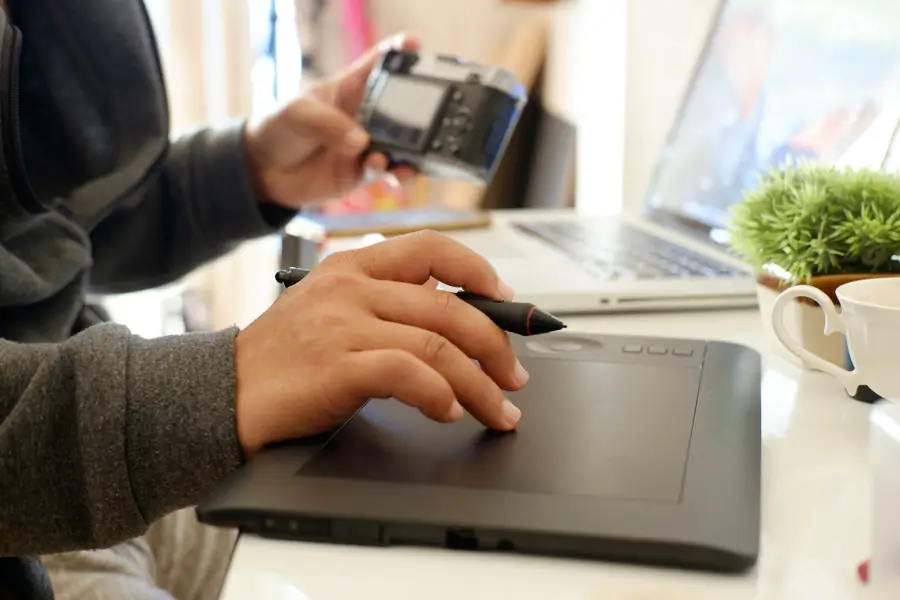
BUSINESS BASICS

Graphic design is a constantly evolving industry, and the skills that designers need to possess are constantly changing. However, there are certain essential skills that graphic designers must possess in order to be successful. In this article, we will explore the skills that employers look for in graphic designers and explore each skill in detail.
If you are interested in pursuing a career in graphic design, it is important to understand the industry and what it entails. Graphic design is a creative field that involves using visual elements to communicate ideas and messages. It is used in a variety of industries, including advertising, marketing, and publishing.
A graphic designer’s role is to create visual concepts that effectively communicate a message or idea. This can be achieved through a variety of mediums, such as logos, websites, advertisements, and packaging. A graphic designer must have a balance of creative and technical skills to create visually appealing designs that meet client specifications.
Graphic designers must also have excellent communication skills, as they often work closely with clients to understand their needs and preferences. They must be able to take constructive criticism and make changes to their designs accordingly.
There are many different types of graphic design jobs, each requiring different skills and expertise. Web design involves creating designs for websites and other online platforms. User interface design focuses on designing the interface of software and other digital products. Print design involves creating designs for print materials, such as brochures, flyers, and posters. Branding and identity design involves creating a brand’s visual identity, including logos and other branding materials. Motion graphics design involves creating animated graphics for television, film, and other media.
When pursuing a career in graphic design, it is important to understand the different types of jobs available and to develop the skills necessary for each role.
The graphic design industry is constantly evolving, and designers must stay up-to-date with the latest trends, techniques, and software. For example, trends in typography or color choices may change from year to year, and designers must adapt their skills accordingly. Employers look for designers who stay up-to-date with the latest industry trends and can incorporate them into their work.
It is important for graphic designers to continue learning and developing their skills throughout their careers. This can be achieved through attending conferences, taking courses, and following industry leaders on social media.
As a graphic designer, it is essential to have a wide range of technical skills and software proficiency to create high-quality designs. In addition to the skills mentioned in the original text, here are a few more skills that employers may look for:
3D modeling and rendering are skills that can take a designer’s work to the next level. With these skills, designers can create realistic 3D models of products, environments, and characters. Employers may look for designers who are proficient in programs like Blender, Maya, or 3ds Max.
UI/UX design is the process of designing user interfaces and experiences for digital products, such as websites and mobile apps. Employers may look for designers who can create intuitive and user-friendly interfaces that enhance the user experience. Proficiency in programs like Sketch, Figma, or Adobe XD may be required.
Print production is the process of preparing digital designs for printing. Employers may look for designers who are familiar with the technical aspects of print production, such as color management, file formats, and resolution. Proficiency in programs like Adobe Acrobat and Adobe InDesign may be required.
Brand identity design involves creating visual elements that represent a brand, such as logos, color schemes, and typography. Employers may look for designers who can create cohesive and memorable brand identities that resonate with customers. Proficiency in programs like Adobe Illustrator and Adobe Photoshop may be required.
Social media design involves creating visual content for social media platforms, such as Instagram, Facebook, and Twitter. Employers may look for designers who can create eye-catching and shareable social media posts that align with a brand’s identity. Proficiency in programs like Canva, Adobe Spark, or Hootsuite may be required.
Artistic and creative abilities are essential for a successful career as a graphic designer. A graphic designer must be able to create visually appealing designs that effectively communicate a message to the target audience. Here are some of the key artistic and creative abilities that are essential for a graphic designer:
Color theory involves understanding how colors interact and affect each other in a design. Designers must have a good understanding of color theory and be able to apply it to their work in order to create visually harmonious designs. A designer who has a good understanding of color theory can create designs that are visually appealing and effective in communicating a message to the target audience.
For example, a designer who is creating a logo for a new brand must choose colors that are appropriate for the brand’s message and target audience. If the brand is targeting children, the designer may choose bright and playful colors, while if the brand is targeting a more mature audience, the designer may choose more subdued and sophisticated colors.
Illustration involves creating visual representations of words, concepts, or ideas. Drawing skills are also important for designers who need to sketch out concepts or create rough drafts of their designs. Employers may look for designers who can create original illustrations and have strong drawing skills.
For example, a designer who is creating a poster for a music festival may need to create an illustration of the headlining band. A designer with strong illustration skills can create an original and visually appealing illustration that effectively communicates the message of the poster.
Illustration involves creating visual representations of words, concepts, or ideas. Drawing skills are also important for designers who need to sketch out concepts or create rough drafts of their designs. Employers may look for designers who can create original illustrations and have strong drawing skills.
For example, a designer who is creating a poster for a music festival may need to create an illustration of the headlining band. A designer with strong illustration skills can create an original and visually appealing illustration that effectively communicates the message of the poster.
Graphic designers are often tasked with visual storytelling and communicating a brand or company’s message to consumers. Employers look for designers who can effectively communicate a message through their designs and create designs that tell a story.
For example, a designer who is creating an advertisement for a new product must effectively communicate the product’s features and benefits to the target audience. A designer who is skilled in visual storytelling and communication can create an advertisement that effectively communicates the product’s message and encourages consumers to make a purchase.
Graphic design is a field that requires a unique blend of technical skills and personal attributes. While technical skills such as proficiency in design software are important, employers also look for designers who possess specific soft skills and personal attributes that can help them succeed in the industry.
As a graphic designer, you’ll be working closely with clients, team members, and other stakeholders to ensure that your designs meet project goals and requirements. This requires strong communication and collaboration skills. Employers look for designers who can effectively communicate their ideas and collaborate with others to produce high-quality designs. This includes being able to listen to feedback, explain design choices, and work effectively in a team environment.
One way to develop your communication and collaboration skills is to seek out opportunities to work on group projects or collaborate with other designers. This can help you learn how to effectively communicate your ideas and work with others to achieve a common goal.
Graphic designers often work on multiple projects at once, and must be able to manage their time effectively in order to meet project deadlines. This requires strong time management and organizational skills. Employers look for designers who are organized and able to manage their time efficiently. This includes being able to prioritize tasks, set realistic deadlines, and stay on top of project timelines.
To improve your time management and organizational skills, consider using a project management tool or software to help you stay organized and on track. You can also try creating a schedule or to-do list to help you prioritize tasks and manage your time more effectively.
The graphic design industry is constantly changing and evolving, and designers must be able to adapt to new trends, techniques, and software. This requires a willingness to learn and a commitment to staying up-to-date with changes in the industry. Employers look for designers who are willing to learn and keep up with changes in the industry.
One way to demonstrate your adaptability and willingness to learn is to take courses or attend workshops to learn new skills or techniques. You can also stay up-to-date with industry news and trends by reading design blogs or attending industry events.
Attention to detail and problem-solving skills are important for graphic designers, who must ensure that their designs are visually appealing, accurate, and meet the project requirements. Employers look for designers who have a keen eye for detail and can solve design problems creatively.
To improve your attention to detail and problem-solving skills, try practicing your design skills by creating mock designs or redesigning existing designs. This can help you develop your eye for detail and your ability to solve design problems creatively.
In conclusion, possessing a wide range of technical, artistic, and personal skills is essential for success as a graphic designer. By developing and honing these essential skills, you’ll be better equipped to meet the demands of clients and create impressive designs that meet project goals and requirements.

The Art Career Project is a trusted resource for emerging and professional artists.